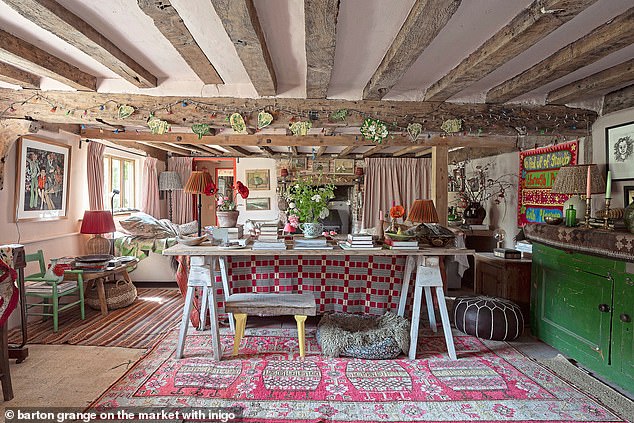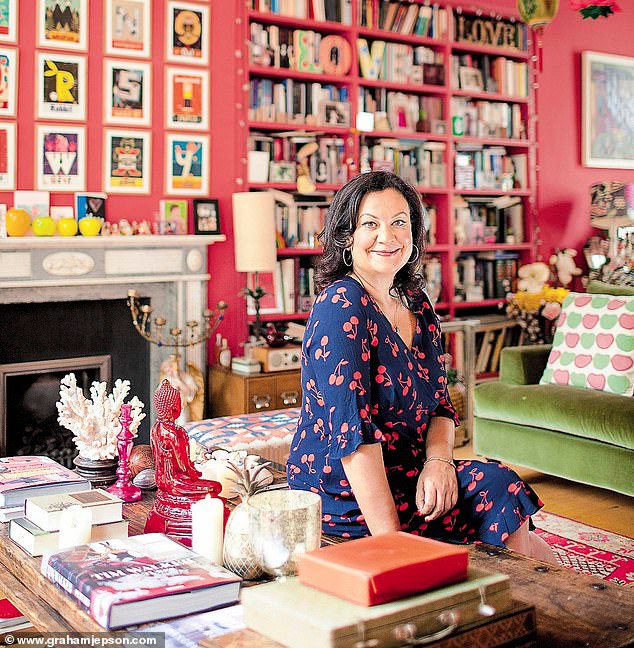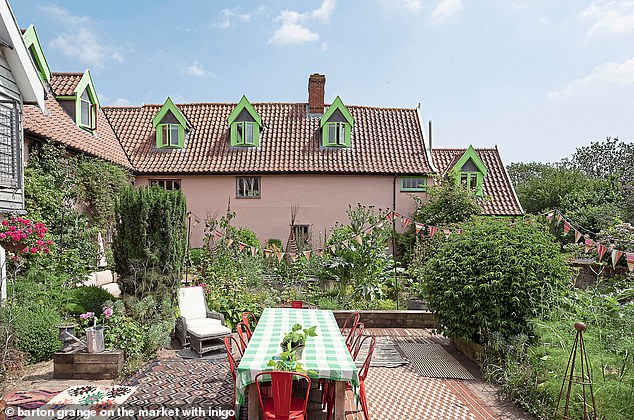I am fascinated by physical living spaces and by the harder to define, more emotionally resonant notion of ‘home’. This isn’t so much because I am an interiors obsessive but rather because I think of our houses as the private places where our inner selves live. Our souls, really, though that is a very dramatic way of putting it. What it means is that I have a seriously intimate relationship with any space I live in. I think of my house as I might think of an extra family member. I cherish it and buy it presents, and it repays me by being a constant, and remarkably tantrum-free, source of joy and comfort.
I believe my attachment to my own house stems from childhood – I lived in quite a lot of houses and always longed for ‘home’ to be one specific, unchanging place. I used to be envious of people who complained about going home for Christmas and sleeping in their childhood bedroom – single bed, poster of Morten Harket and books about ponies included. There is something incredibly comforting about that to those of us for whom childhood bedrooms kept changing locations and even countries. In adulthood it means that you are either breezily nomadic or that when you put down roots somewhere, you really go to town. I’m in the latter category.

India’s Suffolk kitchen.
I lived in London until ten years ago, when, aged 50, I moved to rural Suffolk. We looked at precisely one house – because when you know, you know – and had our offer accepted the next day. My youngest child, then 11, was enrolled in the local school, and off we went (she is now 21 and, although you really wouldn’t think it to look at her, she still knows an improbable amount about tractors).
This house, which we are preparing to leave, has been mostly pure joy for a decade – from dinners and parties to giant family Christmases to entire summers spent basically living outside, feeling like we were in the south of France rather than East Anglia (which is England’s driest region, though it doesn’t necessarily feel like it in bleak January). I think of the house as a friend, an endlessly adaptable one, who is there to comfort you in your hour of need and celebrate with you when there is cause to rejoice. The rest of the time it is a quiet, benign, companionable presence. It accommodates a vast number of people when it needs to, but magically it never feels like anyone’s rattling around when there are fewer of us.
The house has taught me so many things, not least how to garden. I was a complete novice but now grow most of the vegetables we eat, and all of the flowers that fill the house. It has made me obsessively interested in birds and clouds, extremely appreciative of, and grateful for, the work of farmers (and their community spirit: when the area flooded one winter and the lanes were impassable, farmers got into their giant tractors, swerving the abandoned cars, and went to collect stranded children from their schools), and more capable of dealing with creatures like mice and spiders. And flying ants. And ladybird invasions. And dead muntjacs. And escapee rams. And so on.
Everyone’s home, no matter how big or small and regardless of whether it is a rented flat or a giant pile, in a town or in the country, should feel like that – like a true pal. It doesn’t happen by magic, though. Yes, some houses are nicer than others, or have better bones, or are perfectly suited to your purposes. But the thing that brings the magic is you, the person who lives there. You need to give it everything you’ve got.
Houses are made of bricks, but also of memories. The longer you stay, the more you fill the house with your people and your personal things – things that really speak to you and gladden your heart – the richer and more intricate the patchwork quilt of your intertwined lives becomes. I think that sometimes you can feel that, when you go into someone’s home: you go through the door and some houses seem full of feelings and life, while some feel thin and insubstantial.

In her London home surrounded by the things she loves
For the past couple of years, I’ve kept an eye out for a smaller version of this house, which is too big considering my partner’s children and mine are now all adults who live in London. Because I think the way I do about property – with the heart rather than the head – nothing ever hove into view apart from a tiny two-bedroomed cottage so utterly charming that for a while I crazily convinced myself that it was just right, because it had a particularly beautiful swimming pond. It really wasn’t just right – it was minuscule. (When I showed it to one of my sons and pointed out that there weren’t enough bedrooms for him and his siblings to come and stay at the same time, he said, ‘It wouldn’t matter, though, because we’d just be swimming all day.’)
But then, suddenly, at the most wildly inconvenient time imaginable – my partner was about to have major surgery, I had a book to deliver and about 95 other time-consuming, mildly stressful things were going on – the house of my dreams suddenly appeared. You know those mad people who buy things without even looking at them?
I could have done that. I didn’t, but I could have. I just knew. In the event we did of course look at it, grinning from ear to ear and from room to room, with that euphoric feeling you get when you’re in the right place.

The back garden in the Suffolk countryside, family party ready
That feeling of a patchwork quilt, of a thick tapestry of life, was overwhelming. The house was beautiful, not just because it was aesthetically pleasing but because it had soul and patina. I have no idea what went on there over the centuries, but I knew that it was a house that had been loved and that people had really lived in. And then our house sold, to someone who I think loves it just as much as we have loved it. It was like the stars aligning.
My superpower is making any space, be it a room, a series of rooms or a giant house, feel home-like and cosy within hours if it’s small and a few days if it’s big, using nothing more extravagant than paint, a few basic decorating tricks and the meaningful objects I’ve acquired and dragged around with me all my adult life (no Marie Kondo-ing here). People have asked me how I can bear to leave this house. The answer is – well, ‘you should see the new house’.
Another answer might be that there is something thrilling about new chapters. But the real answer is that I am taking the spirit of this house with me. That is why the spaces we inhabit matter so much to me: because if you get it right, if you surround yourself with things you find beautiful and meaningful and emotionally nourishing, you can create a home that makes you sigh with contentment anywhere. It’s like the difference between learning to cook and living off ready meals: in the absence of a shop, you know you’ll still be able to rustle up something, and the chances are it will be delicious.
So I can’t wait. And if all else fails, I can always read my own book for advice.
Home – How To Love It, Live In It And Find Joy In It will be published by Penguin on Thursday, £22. To pre-order a copy for £18.70 until 26 October, go to mailshop.co.uk/books or call 020 3176 2937. Free UK delivery on orders over £25
Find India’s newsletter, also called Home, at indiaknight.substack.com
